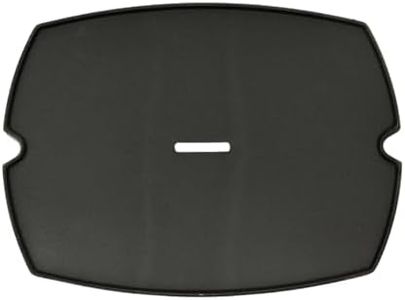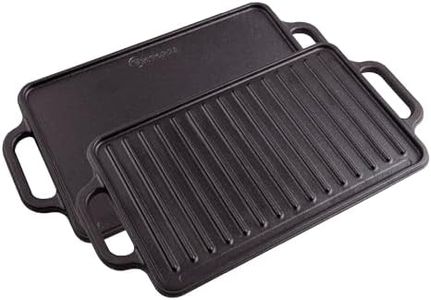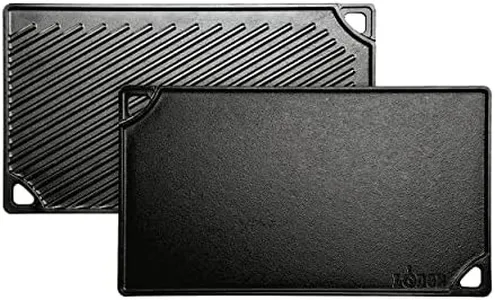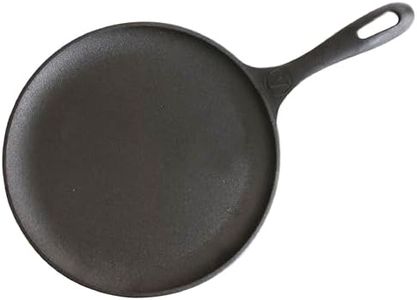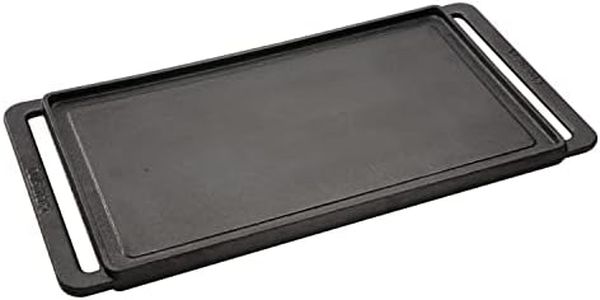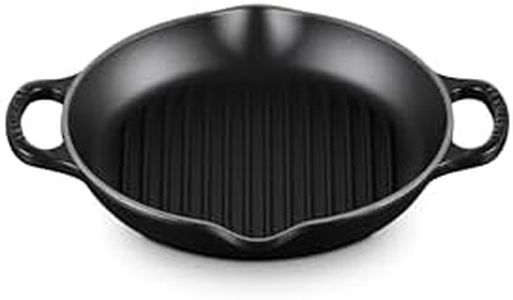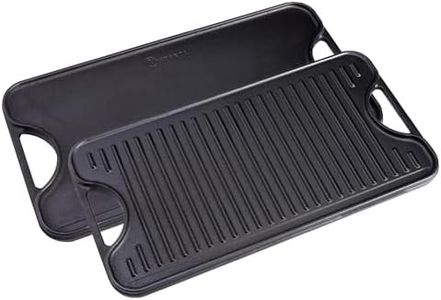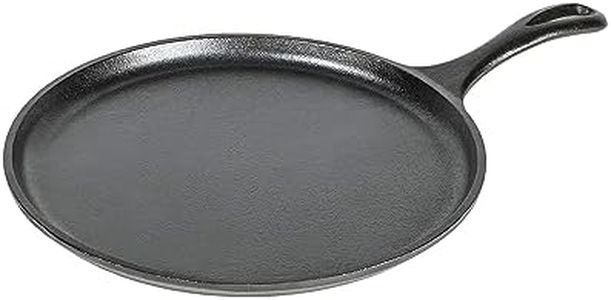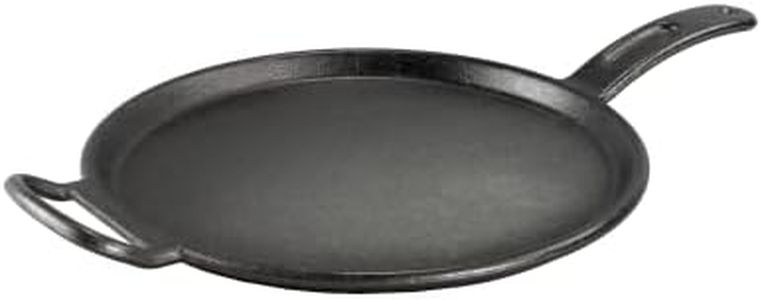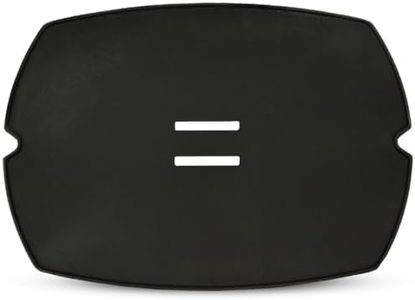We Use CookiesWe use cookies to enhance the security, performance,
functionality and for analytical and promotional activities. By continuing to browse this site you
are agreeing to our privacy policy
10 Best Cast Iron Griddles
From leading brands and best sellers available on the web.By clicking on a link to a third party's website, log data is shared with that third party.
Buying Guide for the Best Cast Iron Griddles
Choosing the right cast-iron griddle can make a big difference in your cooking experience, whether you're making pancakes, searing meats, or preparing grilled sandwiches. Cast-iron griddles are known for their durability and even heat distribution, making them a great addition to any kitchen. When looking for the best fit, consider your cooking habits, the size of your stovetop or grill, and how much food you generally prepare. Understanding the key specifications will help you pick a griddle that matches your needs and cooking style.Size and ShapeThe size and shape of the cast-iron griddle refer to its overall dimensions and whether it's rectangular, square, or round. This spec is important because it determines both how much food you can cook at once and whether the griddle will fit on your stovetop or over your burners. If you regularly cook for a group or family, a larger griddle lets you prepare more food at one time, but it needs to fit comfortably on your stove or grill surface. Smaller griddles are easier to handle and store, making them better for single servings or small kitchens. Choose a size that balances your space and portion needs, and make sure the shape works with your cooking equipment.
Weight and ThicknessWeight and thickness refer to how heavy and dense the griddle is. Heavier, thick griddles heat up more slowly but hold heat exceptionally well, offering steady cooking temperatures and better searing capabilities. Lighter griddles heat up faster and are easier to move, but may not heat as evenly. If you care about precise temperature control and plan to cook foods like steaks or burgers, a heavier griddle is often best. If you need something portable or easy to clean, consider a lighter option. Think about your strength and storage space as well when deciding how heavy a griddle you want to handle regularly.
Cooking Surface (Smooth vs. Ridged)The cooking surface can either be flat (smooth) or have raised ridges. Smooth surfaces are ideal for pancakes, eggs, and sandwiches since they provide even contact with the food. Ridged surfaces are good for grilling meat and vegetables because they leave grill marks and allow fats to drain away. Some griddles offer a reversible surface, with one side smooth and the other ridged, giving you flexibility. Consider what you tend to cook most often—if you enjoy variety, a reversible griddle gives you more options without needing extra equipment.
Pre-seasoned vs. UnseasonedPre-seasoned griddles come with an oil coating baked into the surface, making them ready to use right out of the box and less likely to stick. Unseasoned griddles require you to season them yourself with oil before first use. Seasoning builds up a nonstick layer and helps prevent rust. If you prefer convenience and want to start cooking immediately, a pre-seasoned griddle is a good choice. If you like customizing your cookware’s surface over time and don’t mind doing a bit of prep, unseasoned griddles let you create your seasoning from scratch.
Handles and Pour SpoutsHandles and pour spouts are features that make using a cast-iron griddle safer and more convenient. Sturdy handles help you lift, move, and position the griddle, which is particularly important for heavy models. Pour spouts allow you to drain off excess grease or liquids safely and easily. If you plan to handle the griddle often or use it for foods that release a lot of fat, look for one with easy-to-grip handles and well-designed spouts. Smaller griddles may have only one handle, while larger ones generally have two for balance.
Compatibility (Stovetop, Oven, Grill, Induction)Compatibility refers to whether the griddle can be used on different heat sources, such as a gas or electric stove, oven, outdoor grill, or induction cooktop. Most cast-iron griddles are very versatile, but their fit and function can vary, especially with induction stoves. If you want to use the griddle over open fire or on the grill, confirm that it's rated safe for high temperatures and outdoor use. Check the size so the griddle doesn't extend too far beyond your burners, which can affect heating and safety. Decide based on where you plan to cook most often, and make sure the griddle matches your main heat source.
